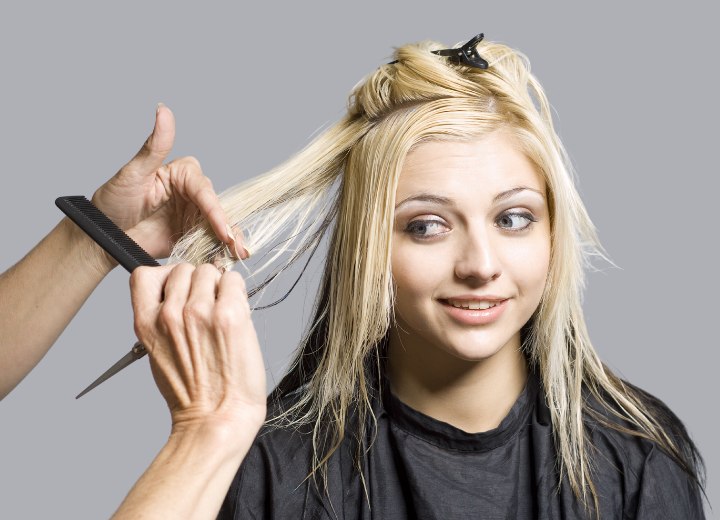Haircut Phobias

Why are some people afraid of getting a simple haircut? We've all seen small children cry as they get their first haircut. Is a haircut phobia simply a grown-up version of this experience? The answer, it seems, is not so straightforward.
Haircut phobias are actually a form of specific phobias. Other specific phobias include things such as a fear of needles, dentists, and flying. According to the National Institute of Mental Health, more than 6.3 million American adults suffer from some type of specific phobia. Women are twice as likely to suffer from this type of anxiety disorder as men.
While many people may report experiencing such worries, a phobia involves more than just fear. A fear may be called a phobia if the fear of an object or situation is excessive and becomes so great that it causes severe distress, avoidance, and has a negative impact on the individual's life.
When diagnosing phobias, doctors and psychologists refer to the Diagnostic and Statistical Manual of Mental Disorders, which outlines the symptoms and diagnostic criteria of all mental illnesses recognized by the American Psychiatric Association. To be diagnosed with a specific phobia, an individual must:
1. Have an intense and persistent fear of an object or situation.
2. Experience significant interruption in normal functioning, such as at home, work, school, or in relationships as a result of the anxiety or avoidance of the fear object.
3. Experience immediate anxiety when faced with the fear object. This anxiety may at times escalate into a panic attack.

But why do such fears persist, even in the face of negative consequences? One male haircut phobia sufferer reported experiencing shame and ridicule by strangers who often mistook him for a girl because of his long hair. He eventually learned to feel good about his long hair, but was unable to conquer his fear of getting haircuts.
In some cases, a haircut phobia may be related to a previous bad experience. For example, someone with a haircut phobia may have experienced intense fear while receiving their first haircut as a young child. Because of this possibility, parents should do everything they can to ensure that haircuts are a pleasant experience for children.
"For me, it has a lot to do with sharp blades going so close to my head. And there's the part where people stare at new haircuts and even taunt," wrote a commenter at one website. This statement alludes to two different potential roots of a haircut phobia. A fear of sharp blades is another form of specific phobia and could very well be why some individuals fear haircuts. A fear that other people will laugh at or mock a new haircut may be related to social phobias, which involve fear or anxiety in social situations where the individual might be evaluated by others.
In these cases, a haircut phobia may actually be a sign of a greater problem. If the disorder is related to a fear of social evaluation, the individual may actually be suffering from social anxiety disorder. In order to avoid serious negative detriments to relationships and other aspects of daily life, these individuals should seek treatment from a qualified mental health professional.

There are several different treatment options that can be effectively used to treat haircut phobias. One of the most common treatments involves the use of cognitive-behavioral therapy. The cognitive part of this therapy technique involves changing the way a person thinks about the fear object. In this case, a therapist would help the individual change how they think about haircuts, to help the person view them in a more positive light.
The behavioral component of this therapeutic treatment involves changing how people react when confronted by the fear object, often through a process of exposure. In this case, the therapist may begin by having the individual read a magazine about haircuts. Next, the individual might be asked to handle tools used by hairstylists, such as scissors, razors, brushes, and combs. Then, the individual might spend some time at a hair salon watching other people get haircuts. The final step in this treatment would be for the individual to get their own hair cut without experiencing excessive or irrational fear.
While most of us feel excited about getting a new haircut, others find the experience nothing short of unbearable. Those suffering from a haircut phobia can access resources or develop their own techniques for dealing with this type of fear. Learning to overcome a fear of haircuts can help a person's confidence, self-esteem, and appearance.
©Hairfinder.com